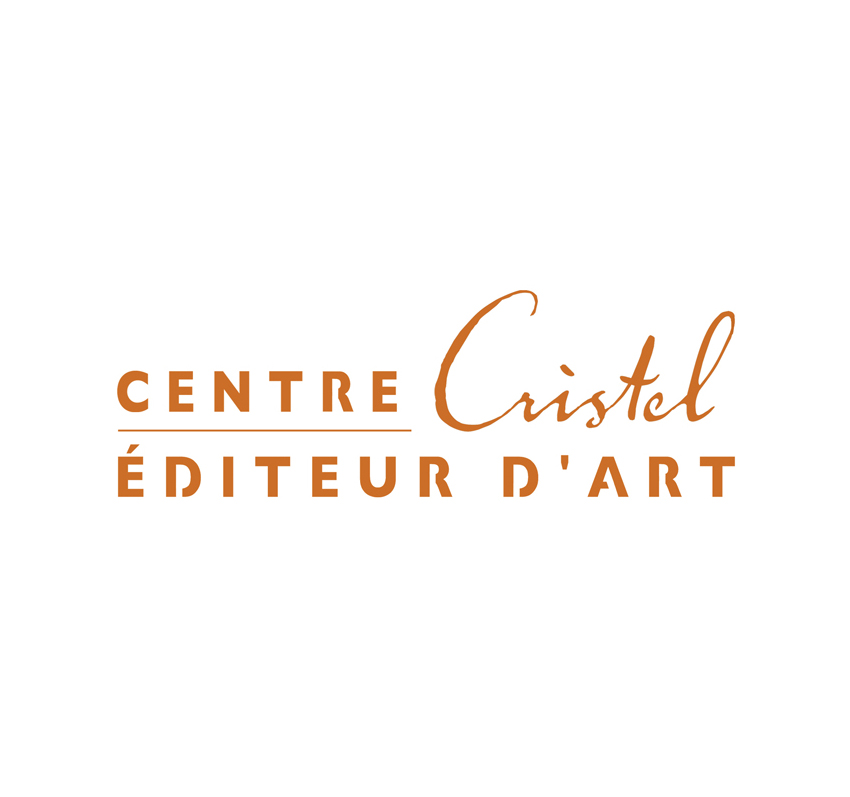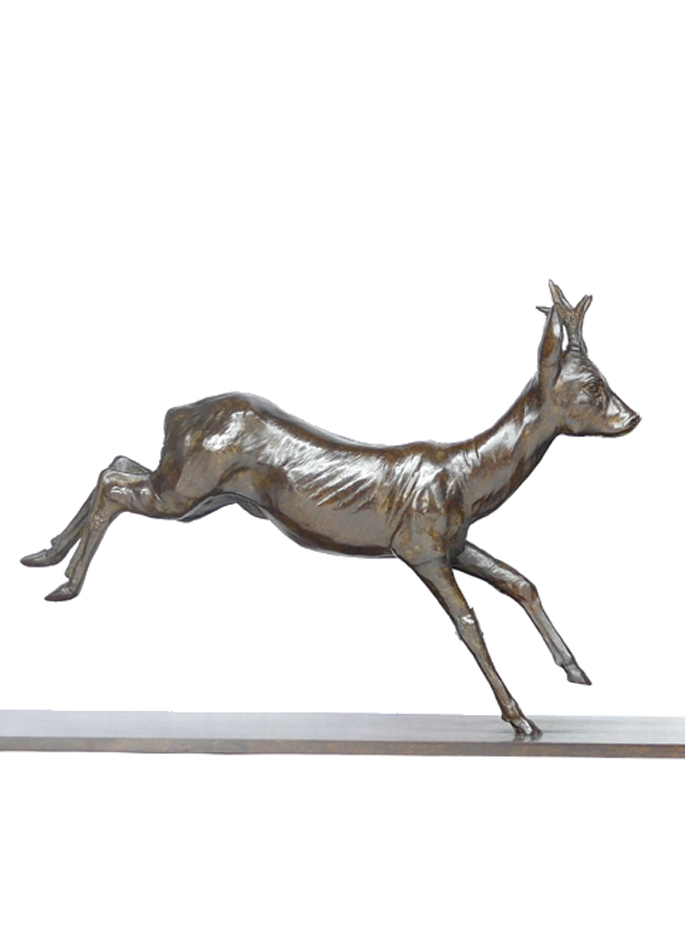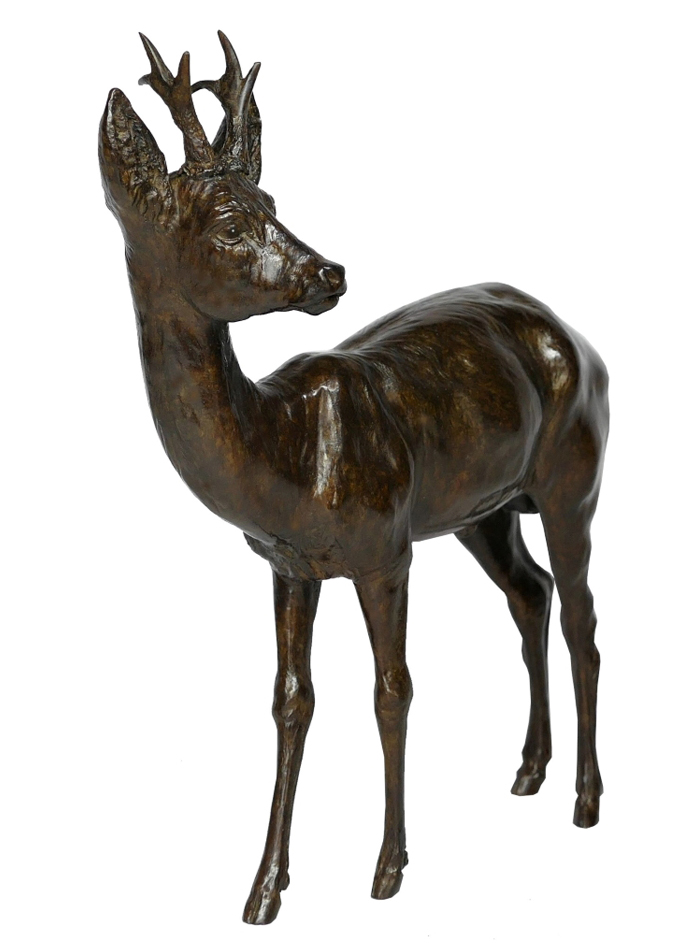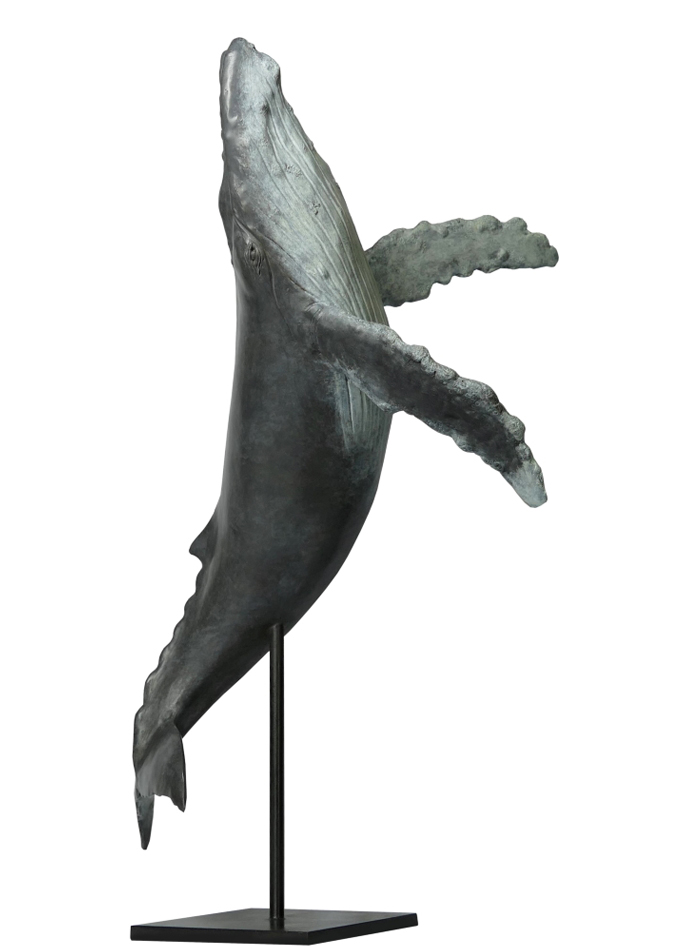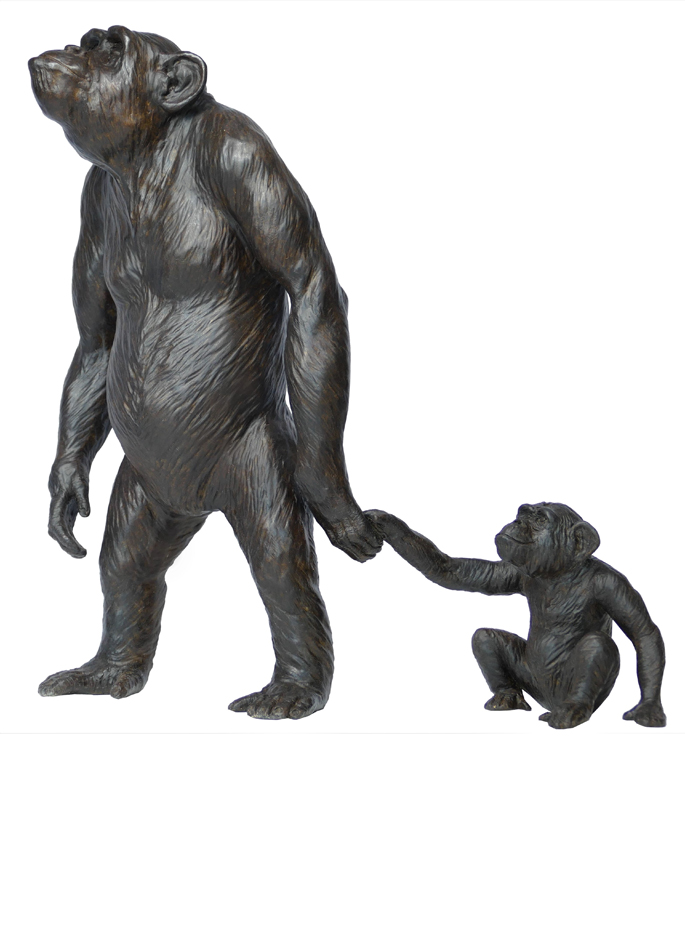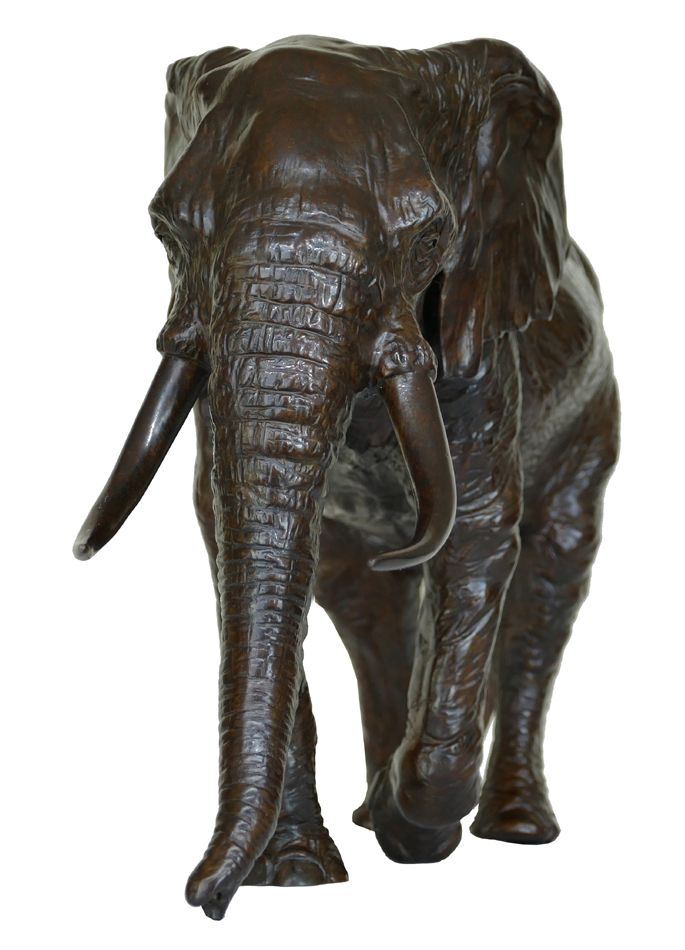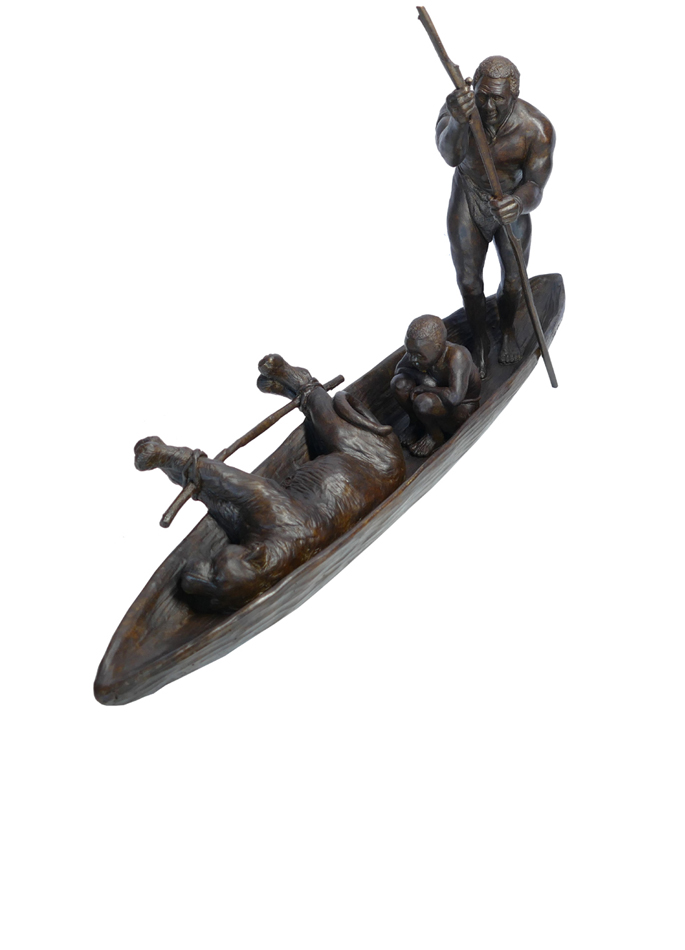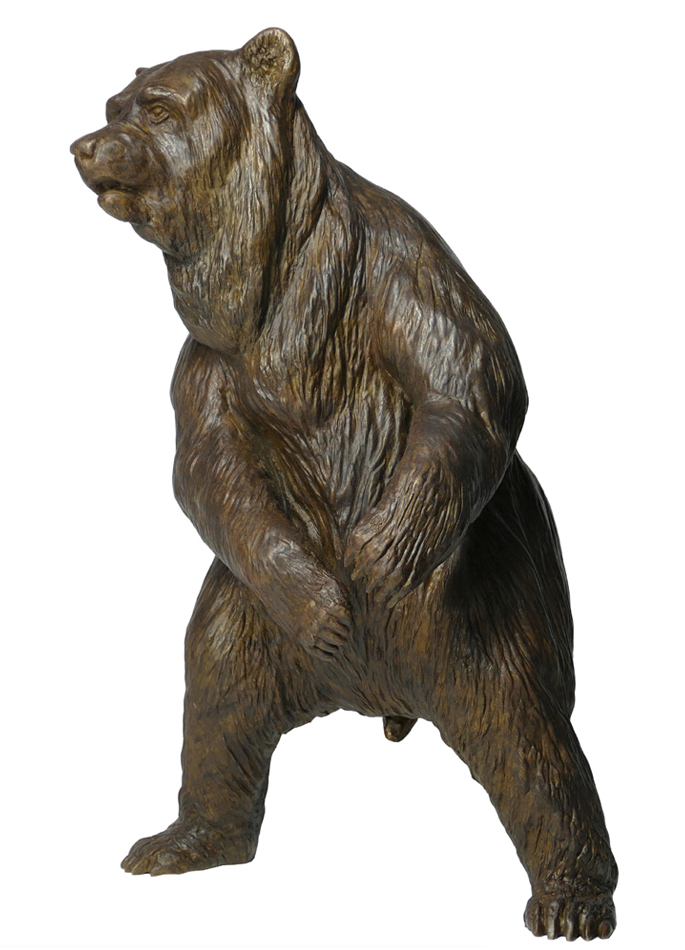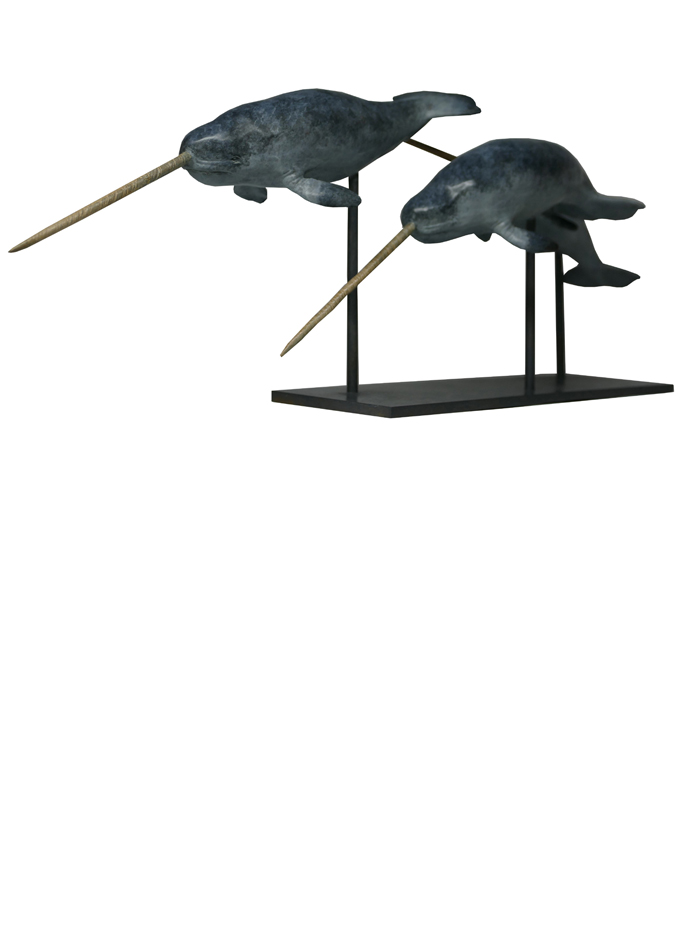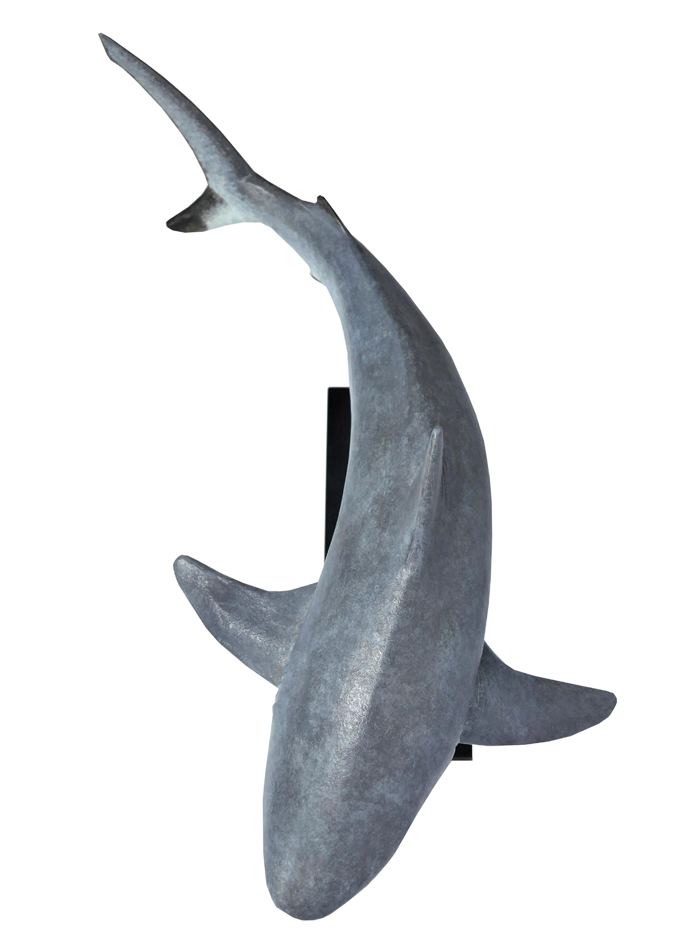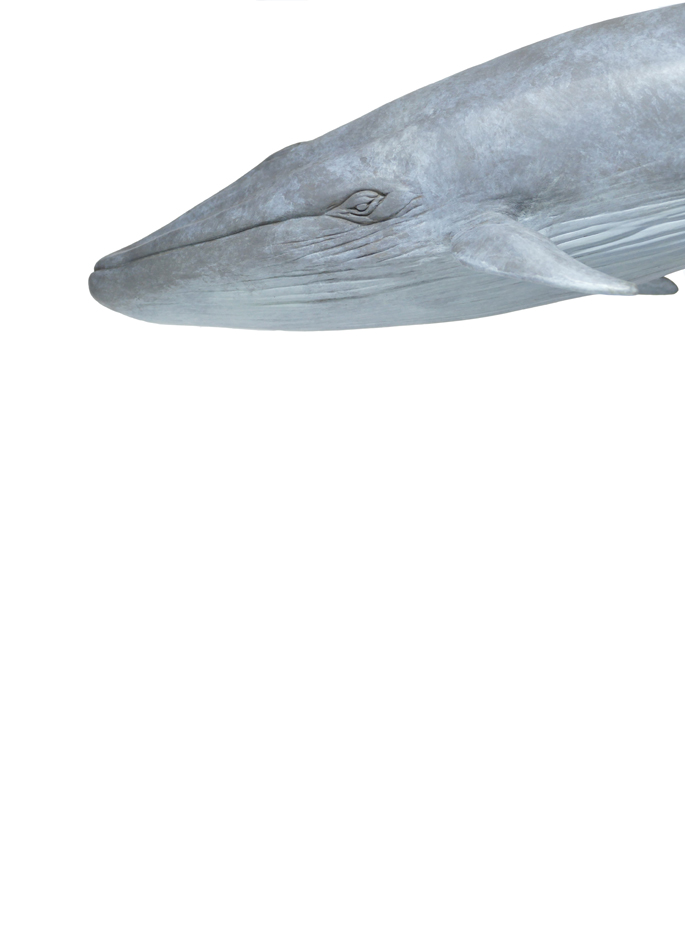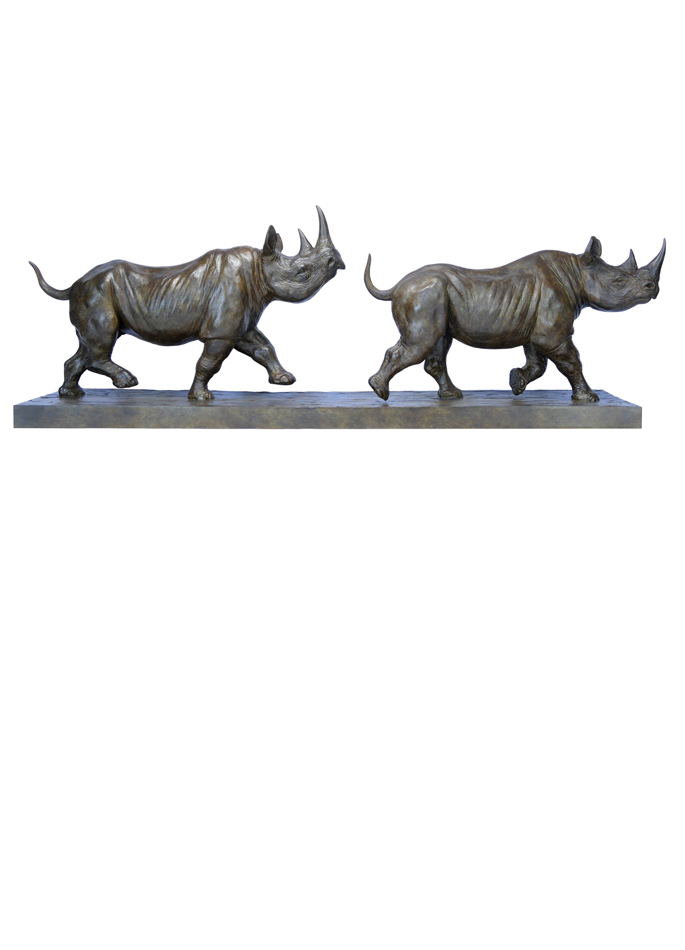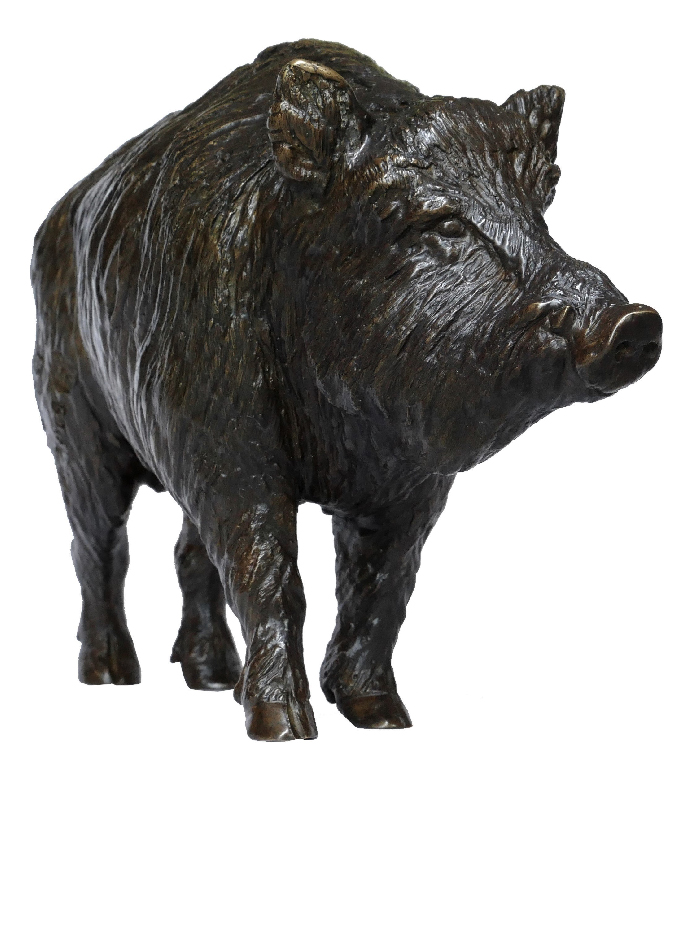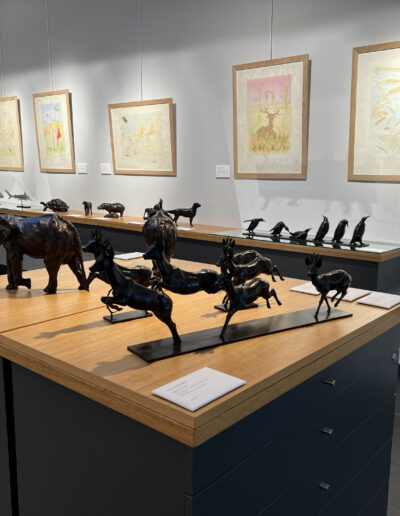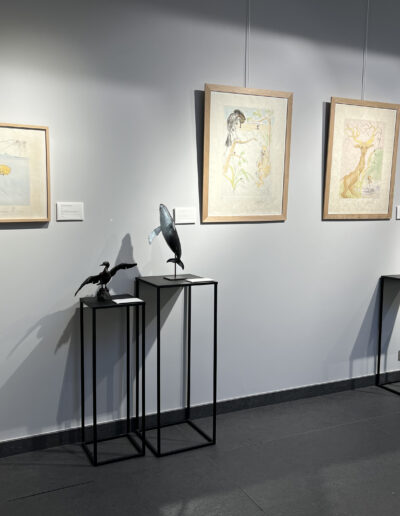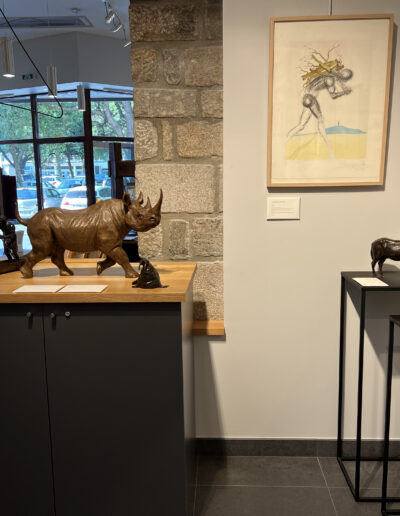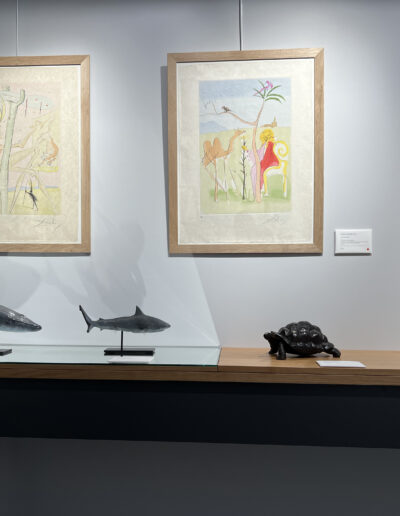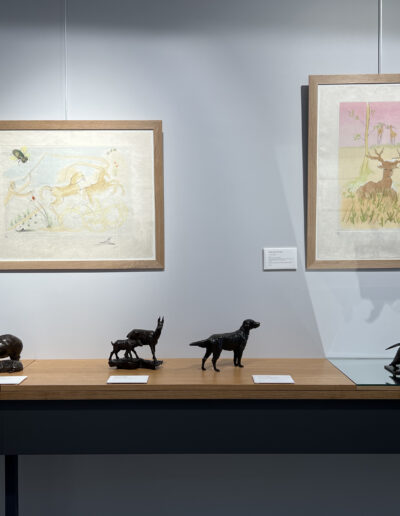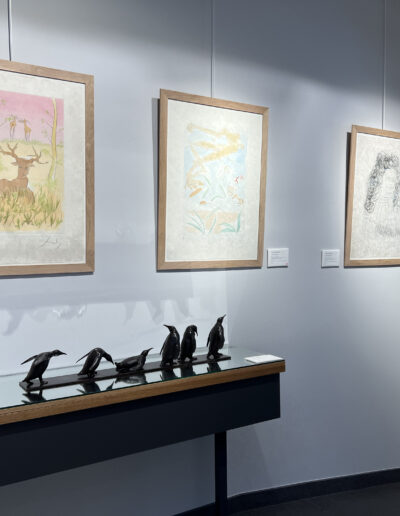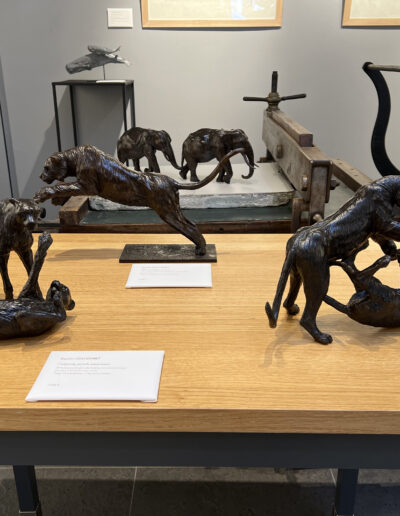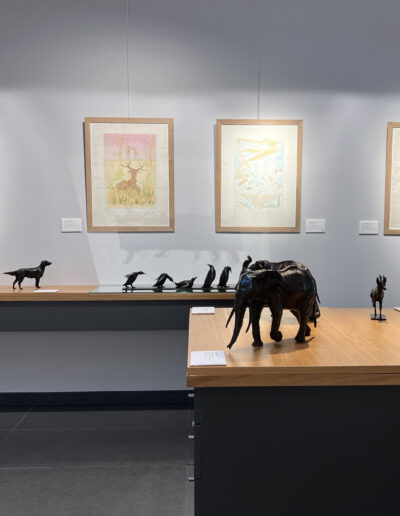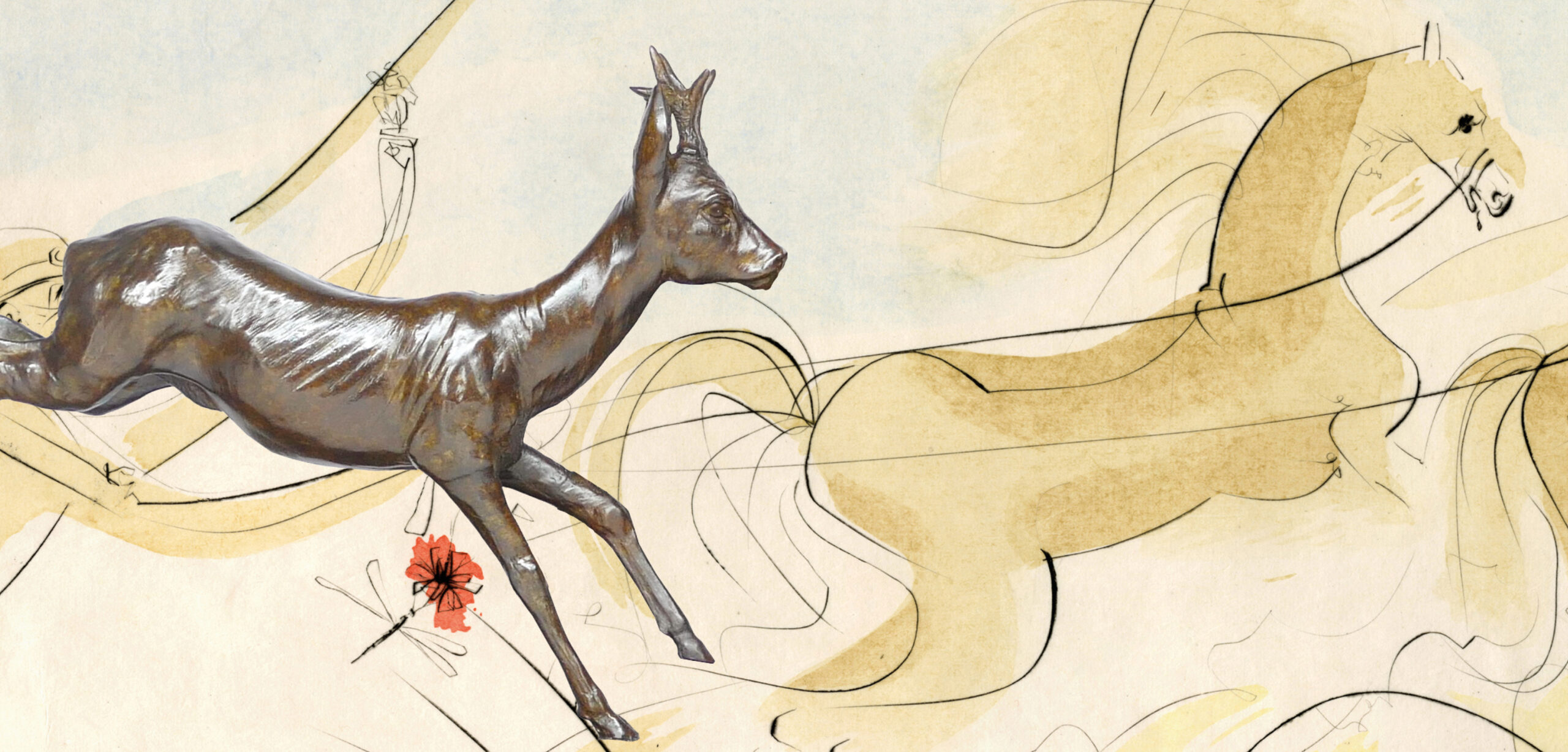
Exhibition Bestiaires. Damien Colcombet and Salvador Dalí
From July 8 to October 7 2023
By whom or by what should one begin when introducing “Bestiaires”, thirty-fourth rendezvous organized by the Centre Cristel Éditeur d’Art in Saint-Malo? By Salvador Dalí, the worldwide genius born in Figueras in 1904? Or by Damien Colcombet, a sculptor from Lyon with roots in Bretagne — he was born in Rennes in 1967—, who is the center of attention of this exhibition, for the fourth time since 2017? Unless we choose to introduce our subject by what unites both creators: the bestiaire.
Works from the exhibition Bestiaires
Radiology of the bestiaire
Damien Colcombet and Salvador Dalí
By whom or by what should one begin when introducing “Bestiaires”, thirty-fourth rendezvous organized by the Centre Cristel Éditeur d’Art in Saint-Malo? By Salvador Dalí, the worldwide genius born in Figueras in 1904? Or by Damien Colcombet, a sculptor from Lyon with roots in Bretagne — he was born in Rennes in 1967—, who is the center of attention of this exhibition, for the fourth time since 2017? Unless we choose to introduce our subject by what unites both creators: the bestiaire. That is to say, according to the two acceptations from the Dictionnaire Quillet, sometimes the “man who fought against ferocious beasts in amphitheaters”, sometimes the “didactic treatise from the early Middle Ages describing real or imaginary animals”. A large spectrum, as we can see, perfectly summarizing our new exhibition. What is Dalí, in fact? If not the perfect example of a champion who has entered the arena to dazzle the audience — “first of all dazzle”, this crazy self-centered man thought — then crush the lines as surely as a giant would reduce bones to dust! From there the way he had to seize his stylus and work on the copper plate. Blows, charges, withdrawals, spins, momentums. Nothing less than a Cyrano who feints and touches, then sends us, ecstatic, in the stars…
The proof? The twelve dry points from his Bestiaire de La Fontaine dalinisé, produced in 1974 by Robert Mouret, justified then signed by the master under the supervision of a bailiff from Metz, Marcel Bilger. The latter confirmed that these twelve dry points, soon to be legendary (everything that was made by Salvador Dalí became legendary) were printed by the presses of the atelier Rigal, in Fontenay-aux-Roses, on three different types of paper: 250 proofs on Arches, 250 proofs on Japan paper and 244 on Richard de Bas, including 62 reserved for the artist, that is to say a total of 744 proofs. Those hanged on the walls of the Centre Cristel Éditeur d’Art are from the most prestigious of these print runs: the dry points on Japan paper, which mix the flamboyances of the line
and the subtlety of the colors with secret energies from a paper made fiber by fiber, by hand. Flamboyances that can be defined in one word: surrealist! In other words, a raven and a fox, an elephant and a monkey, a stag and a lion escaping their first adulator, Jean de La Fontaine, to appear in a gigantic dream world — Dalí’s world!
What does Damien Colcombet think about it while going through the elephants, the monkeys, the lions, the deers, but also the giraffes, the tigers, the rhinoceroses, the ostriches, the oryxes, the buffaloes, the penguins, the whales, the narwhals or the bears inhabiting his own bestiaire. Yes, what does he think about it every time he grabs a bit of chamotte clay, then brings to life, as an authentic demiurge, a real piece of life from a bit of clay? It should be noted here that the magazine, Chasses internationales had written in September 2018: “gifted animal sculptor, probably the most brilliant of his generation, in the figurative genre”. Hence the admiration that his first collector, Alain Delon, vowed to him. Hence, also, this certainty inhabiting those who saw him sculpting with his eyes closed, as if it was about rendering and not inventing for him. “When I make an elephant, I am an elephant. When I model a tiger, I become a tiger”, Damien Colcombet explains with his firmly didactic voice. What comes out of it are animals more alive than the original, which are much sought after today on the art market. To such an extent that a sold out cast of the gorilla Platon, sold 2 000 € in 2007, was sold at auction, in April 2023, for 7 800 €!
“No desire is guilty, there is fault only in its repression” If Salvador Dalí says it…
Christophe Penot
Art editor
